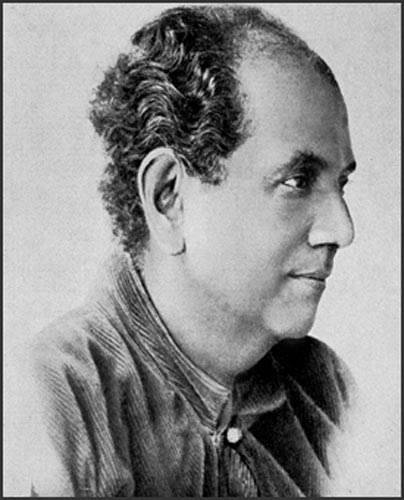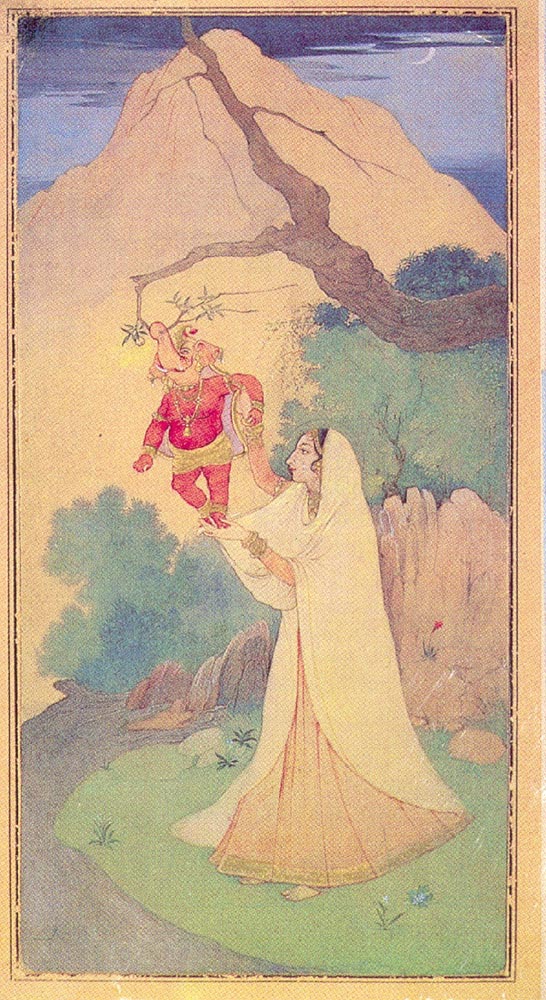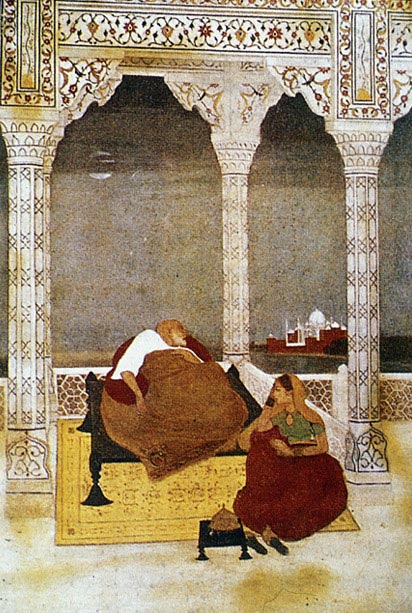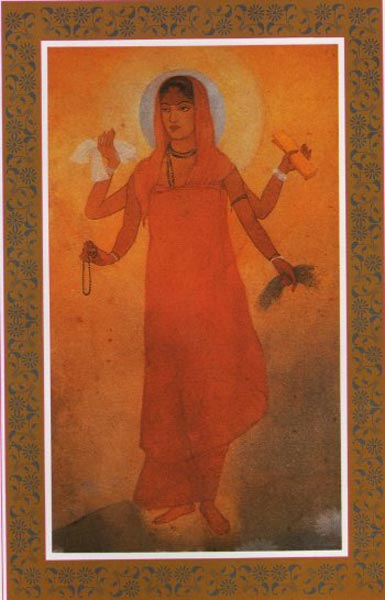| Abanindranath Tagore | |
|---|---|
 |
|
| Born | Aug. 7, 1871 Calcutta, West Bengal, India |
| Died | Dec. 5, 1951 (at age 80) |
| Nationality | Indian |
| Movement | Bengal school of art |
| Field | Painting, writing |
| Works | View Complete Works |
Abanindranath Tagore (1871-1951) was an Indian painter. He founded the Indian Society of Oriental Art and was its most important artist. He was also the founder of the Bengal School of Art, which is seen as being instrumental in the advent of Indian painting as it is known today. Tagore was concerned that Western artistic styles were exerting too much influence on Indian painters, and promoted a style based instead on a modern interpretation of traditional Rajput and Moghul art. Tagore also wrote several children’s books, which remain popular in Bengal.
Personal Life
 Tagore was born in the neighborhood of Jorasanko in northern Calcutta. He was part of an important and influential family: his grandfather was the son of Dwarkanath Tagore, who was among the earliest Indian industrial entrepreneurs. He also had a considerable artistic heritage through his uncle, the poet Rabindranath Tagore, as well as through his artist grandfather and older brother. In his late teens, Tagore was sent to Calcutta’s Sanskrit College, where he learned to paint with great expression and technical skill. This experience convinced him that his future was as an artist.
Tagore was born in the neighborhood of Jorasanko in northern Calcutta. He was part of an important and influential family: his grandfather was the son of Dwarkanath Tagore, who was among the earliest Indian industrial entrepreneurs. He also had a considerable artistic heritage through his uncle, the poet Rabindranath Tagore, as well as through his artist grandfather and older brother. In his late teens, Tagore was sent to Calcutta’s Sanskrit College, where he learned to paint with great expression and technical skill. This experience convinced him that his future was as an artist.
In 1890, when he was almost 20 years old, Tagore enrolled at the Calcutta School of Art. While at the renowned school, he was taught especially by two European artists who were employed there as teachers. Charles Palmer taught Tagore how to paint with oils, while O. Ghilardi gave him the benefit of his experience with pastels. By this time, Tagore was a married man, having married Suhasini Devi the previous year. He remained a student at the Sanskrit College for a total of nine years, then moved on to spend a period of 18 months at St. Xavier’s College, where he studied English.
Artistic Development
 Tagore’s first significant published works were a number of magazine illustrations which were published in the early 1890s. Already a writer, he also drew the illustrations for the stories he had written. He expanded his artistic range to include watercolor painting in the late 1890s, having taken a particular interest in that form while undergoing tuition from the Government School of Art’s Vice Principal. However, despite this Western-influenced teaching, Tagore was also becoming increasingly interested in Mughal art, using a style based on this to depict the life of Krishna.
Tagore’s first significant published works were a number of magazine illustrations which were published in the early 1890s. Already a writer, he also drew the illustrations for the stories he had written. He expanded his artistic range to include watercolor painting in the late 1890s, having taken a particular interest in that form while undergoing tuition from the Government School of Art’s Vice Principal. However, despite this Western-influenced teaching, Tagore was also becoming increasingly interested in Mughal art, using a style based on this to depict the life of Krishna.
A little later, Tagore met the English academic and art historian, E. B. Havell. The two men formed a partnership with the aim of modernizing and refreshing the teaching of art at the Calcutta School of Art, a project that received considerable support from Tagore’s brother, Gaganendranath. Tagore felt that Western art was excessively materialistic, and that Indian painting suffered from its close adherence to the British style. In fact, the Pre-Raphaelite movement in Britain itself had already articulated many of the same general ideas as Tagore, although the Indian artist made much of the need for his country to rediscover its own spiritual values and traditions.
Notable Works
 One of Tagore’s most characteristic techniques was the dreamlike Japanese wash, which he began to use in about 1903. Tagore was fascinated by the strongly atmospheric nature of paintings he produced in this way, considering them akin to the expressed imagination of a child who reads a storybook, and painted several notable works in the next decade. These include a series depicting Omar Khayyam, in which the medieval polymath is shown – as one critic put it “dissolved in a veil of atmosphere”. Although he used the style less frequently in later life, Tagore never entirely forsook it, producing striking works such as Shahjadpur Landscape and the moody, light-bathed Ullapara Station.
One of Tagore’s most characteristic techniques was the dreamlike Japanese wash, which he began to use in about 1903. Tagore was fascinated by the strongly atmospheric nature of paintings he produced in this way, considering them akin to the expressed imagination of a child who reads a storybook, and painted several notable works in the next decade. These include a series depicting Omar Khayyam, in which the medieval polymath is shown – as one critic put it “dissolved in a veil of atmosphere”. Although he used the style less frequently in later life, Tagore never entirely forsook it, producing striking works such as Shahjadpur Landscape and the moody, light-bathed Ullapara Station.
Tagore’s earlier pastel works also include some notable portraits. Rabindrath, which he produced in 1892, and Debendranath from a year later are both drawn in the relatively realistic, westernized style that was characteristic of his many of his earlier works. Tagore’s most impressive portrait of this type, however, was completed much later. In the late 1920s, he produced a double portrait of his grandsons. Even though Tagore had by this time become a great admirer of, and advocate for, a distinctively Indian artistic style, he nevertheless produced a portrait which had strong Western influences. The portrait has often been described as showing a certain degree of similarity with paintings from the early years of the Renaissance in Italy.